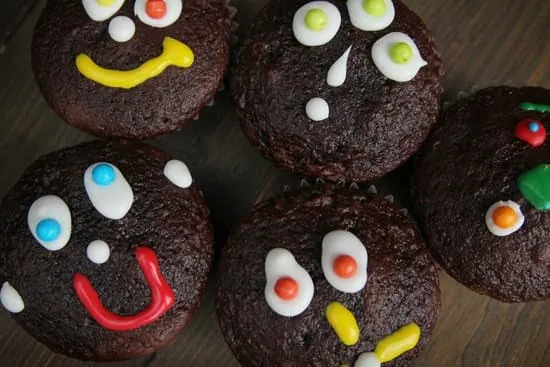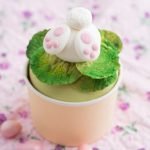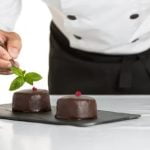Are you looking to learn how to decorate small cakes? Decorating small cakes can be a fun and creative way to add a personal touch to any celebration. From birthdays to weddings, small cakes are a versatile and delectable treat that can be customized to suit any occasion. In this article, we will explore the art of decorating small cakes, discussing the significance of cake decoration and the various techniques and tools needed to achieve stunning results.
Decorating small cakes allows for endless creativity, making them an ideal canvas for expressing individual style and flair. Whether you are a beginner or an experienced baker, mastering the art of decorating small cakes can elevate your baking skills to new heights. We will delve into the essential tools and ingredients required for decorating, as well as provide tips on where to purchase these items.
In addition, we will discuss the step-by-step process of preparing small cakes for decoration, ensuring they are level and smooth for easier decorating. Furthermore, we will explore different decorating techniques such as piping, fondant, and edible decorations, providing detailed tutorials and tips on how to execute each technique effectively. Stay tuned as we unravel the secrets behind creating visually appealing and delicious small cakes through color and flavor coordination.
Essential Tools and Ingredients for Decorating Small Cakes
When it comes to decorating small cakes, having the right tools and ingredients is crucial for achieving professional-looking results. Whether you’re a beginner or a seasoned baker, having the essential tools and ingredients at hand will make the decorating process much smoother. Here are some of the basic items you’ll need to get started:
- Piping bags and tips: These are essential for creating decorative borders, writing, and intricate designs on small cakes.
- Offset spatula: An offset spatula is perfect for spreading frosting smoothly on small cakes and can also be used for creating texture or designs on the frosting.
- Fondant: Fondant is a versatile decorating material that can be rolled out and draped over small cakes for a smooth, polished look.
- Food coloring: Having a variety of food colors on hand will allow you to create endless possibilities for decorating small cakes.
- Edible decorations: Sprinkles, edible glitter, and other decorative elements can add fun and flair to your small cake designs.
In addition to these tools, there are also essential ingredients that you’ll need in order to decorate small cakes effectively. Some key ingredients include:
- Buttercream frosting: This creamy and versatile frosting is a staple for decorating small cakes and can be used as both an icing and a filling.
- Cake boards: Sturdy cake boards provide a stable base for transporting decorated small cakes and can also add a professional touch to your presentation.
- Rolled fondant: If you choose to use fondant as a primary decorating material, having rolled fondant on hand is essential for covering small cakes seamlessly.
When it comes to purchasing these tools and ingredients, specialty baking stores or online retailers are great places to find everything you need. Many of these items are also readily available in larger supermarkets or craft stores with baking sections.
Now that you know what tools and ingredients you’ll need, you’re ready to move on to preparing your small cakes for decoration. Understanding how each tool works and experimenting with different ingredient combinations will help you become more confident in your ability to decorate small cakes beautifully.
Preparing the Small Cakes for Decoration
When it comes to decorating small cakes, the first step is preparing the cakes themselves. Whether you are working with cupcakes, mini cakes, or cake pops, proper preparation is essential for a successful decorating process. Here’s a step-by-step guide on how to prepare small cakes for decoration:
1. Leveling the Cakes: Use a serrated knife to carefully level off the tops of the small cakes. This will ensure that the surface is even and provide a solid foundation for decorating.
2. Crumb Coating: Apply a thin layer of frosting or ganache to seal in any crumbs on the surface of the cakes. This step is crucial for creating a smooth base for decorating.
3. Chilling: After crumb coating, chill the small cakes in the refrigerator for about 15-20 minutes to set the frosting and firm up the cakes.
4. Final Frosting: Once chilled, apply a final layer of frosting or ganache to completely cover the small cakes. Smooth out the surface as much as possible to create an ideal canvas for decorations.
By following these steps, you can ensure that your small cakes are ready to be decorated flawlessly. Remember that proper preparation is key to achieving professional-looking results when it comes to decorating small cakes.
With these simple steps, you can easily prepare your small cakes for decoration and create delightful treats that are not only visually appealing but also delicious. So head into your kitchen and start practicing how to decorate small cakes today.
Different Decorating Techniques for Small Cakes
Decorating small cakes can be a fun and creative way to add a personal touch to any occasion. There are various techniques that can be used to decorate small cakes, each offering a unique and beautiful result. Whether you are a beginner or an experienced baker, learning the different decorating techniques for small cakes can help elevate your cake decorating skills.
Piping
Piping is one of the most common and versatile techniques used to decorate small cakes. It involves using a pastry bag and different tips to create intricate designs with frosting. From elegant swirls and rosettes to intricate patterns and lettering, piping allows for endless possibilities when it comes to cake decoration. For beginners, it’s essential to practice and master basic piping techniques such as creating a smooth and even pressure while piping.
Fondant
Fondant is another popular technique used for decorating small cakes. It is a pliable icing that can be rolled out and draped over cakes for a smooth and flawless finish. Fondant can also be shaped, molded, and cut into various designs to create stunning decorations for small cakes. However, working with fondant requires patience and precision, as it can be prone to tearing or cracking if not handled carefully.
Edible Decorations
In addition to piping and fondant, edible decorations such as sprinkles, edible glitter, chocolate shavings, fresh fruit, and edible flowers can add dimension and visual interest to small cakes. These decorations can be easily applied to the surface of the cake or used as accents in combination with other decorating techniques. When using edible decorations, it’s important to consider color coordination and placement for a visually appealing design.
Learning how to decorate small cakes using various techniques opens up a world of creative possibilities for bakers. By mastering the art of piping, working with fondant, and incorporating edible decorations, you’ll have the skills needed to create stunning and personalized small cakes for any occasion. Practice makes perfect when it comes to cake decorating, so don’t hesitate to experiment with different techniques until you find what works best for you.
Color and Flavor Tips for Small Cake Decorating
When it comes to decorating small cakes, color and flavor play a crucial role in creating visually appealing and delicious treats. The right combination of colors can make your small cakes look stunning, while carefully chosen flavors can enhance the overall taste of the treats. In this section, we will explore some valuable tips on how to choose the right colors and flavors for small cake decorations.
Choosing Colors
When it comes to choosing colors for small cake decorations, it’s important to consider the theme or occasion. For example, pastel colors are perfect for baby showers or spring-themed cakes, while bold and vibrant colors work well for birthdays and celebrations. Additionally, consider using a color wheel to help you coordinate complementary or contrasting colors for a visually appealing result.
Pairing Flavors
Flavor pairing is also an essential aspect of small cake decorating. The flavor of the cake itself should complement the flavors in the decorations. For example, if you are decorating a chocolate-flavored cake, consider using complementary flavors such as raspberry or mint. Experiment with different flavor combinations to create delicious treats that not only look great but also taste amazing.
Importance of Coordination
It’s important to ensure that the colors and flavors of your small cake decorations are coordinated. This means that the colors and flavors should work harmoniously together to create a cohesive and delightful experience for anyone enjoying your decorated small cakes. Consider how the colors and flavors interact with each other when planning your decorations and aim for a balanced combination.
By paying attention to these color and flavor tips for small cake decorating, you can elevate your creations to a new level. Remember that practice makes perfect, so don’t be afraid to experiment with different color palettes and flavor combinations until you find what works best for your small cakes.
Creative Ideas and Inspiration for Small Cake Decorations
When it comes to decorating small cakes, the possibilities are endless. From elegant designs to whimsical creations, there are so many creative ideas to explore. Whether you’re a beginner looking for inspiration or an experienced baker wanting to try something new, here are some creative ideas and sources of inspiration for your small cake decorations.
One popular trend in small cake decoration is the use of edible flowers. Fresh flowers like roses, pansies, and violets can add a touch of natural beauty to your cakes. If you prefer something more whimsical, consider using colorful edible glitter or shimmer dust to make your cakes sparkle and shine. Another idea is to create miniature versions of popular dessert items such as donuts, macarons, or cupcakes as part of your cake decorations.
Looking for a more personalized touch? Consider incorporating custom sugar decorations into your small cakes. These can be anything from monograms and names to themed shapes and characters. Using edible ink markers allows you to draw directly onto fondant or royal icing, opening up a world of creative possibilities.
For those who love a challenge, intricate piping designs and hand-painted details offer endless opportunities for creativity. Take inspiration from nature, architecture, or even fashion to create unique designs that will wow your guests. And don’t forget about seasonal inspirations – holidays, birthdays, and other special occasions provide great opportunities for themed decorations.
By exploring these creative ideas and sources of inspiration, you can take your small cake decorating skills to the next level. Whether you choose to incorporate fresh flowers, custom sugar decorations, or intricate piping designs, the key is to let your imagination run wild and have fun with the process.
| Ideas | Inspiration |
|---|---|
| Edible Flowers | Go floral with fresh roses or violets |
| Custom Sugar Decorations | Personalize with monograms or themed shapes |
| Piping Designs | Create intricate designs inspired by nature or fashion |
Troubleshooting Common Decorating Issues
Decorating small cakes can be a fun and rewarding experience, but it’s not without its challenges. Whether you’re working with frosting, fondant, or edible decorations, there are common issues that can arise during the decorating process. In this section, we’ll address some of these common decorating problems and provide solutions to help you troubleshoot and overcome them.
One common issue that many people encounter when decorating small cakes is achieving the right consistency of frosting. If your frosting is too runny, it can be difficult to work with and may not hold its shape when piped onto the cake.
On the other hand, if your frosting is too stiff, it can be challenging to spread evenly and may result in a less-than-smooth finish. To troubleshoot this issue, make sure you follow your recipe’s instructions for making the frosting and adjust the consistency as needed by adding more powdered sugar for a stiffer consistency or a little milk or cream for a thinner one.
Another common problem when working with fondant is tearing or cracking. Fondant can be delicate and prone to drying out if not handled properly, which can lead to tearing or cracking when rolled out or draped over a cake.
To avoid this issue, make sure to knead your fondant until it’s pliable and smooth before rolling it out. You can also prevent tearing by rolling out the fondant on a surface dusted with powdered sugar or cornstarch to prevent sticking.
Lastly, air bubbles in fondant are another frequent issue for decorators. Air bubbles can create unsightly bumps on your cake’s surface if not properly addressed. To troubleshoot this problem, use a sharp pin or needle to gently prick the bubble and then smooth out the surrounding area with your finger. If you find that air bubbles are a recurring problem, try rolling out your fondant more evenly and applying it to the cake more carefully to minimize air pockets.
By addressing these common decorating issues and implementing the provided solutions, you’ll be better equipped to handle any challenges that arise while decorating small cakes. Remember that practice makes perfect, so don’t be afraid to experiment with different techniques and troubleshoot any issues that come up along the way as you learn how to decorate small cakes like a pro.
Storage and Presentation of Decorated Small Cakes
When it comes to the storage and presentation of decorated small cakes, it is important to ensure that the beautiful decorations remain intact while also preserving the freshness of the cake. One tip for storing decorated small cakes is to keep them in an airtight container to prevent the decorations from getting damaged or dislodged. Additionally, storing the cakes in a cool, dry place will help maintain their shape and texture.
Presentation is also crucial when it comes to showcasing your beautifully decorated small cakes. Whether you are displaying them at an event or presenting them as a gift, using a decorative cake stand can elevate the visual appeal of the cakes. Another idea is to place each small cake in individual cupcake boxes to not only protect the decorations but also make them easier to transport.
It’s important for bakers and decorators to consider how their creations will be transported to their final destination. Whether it’s for delivery or bringing them to an event, taking precautions such as securing the cakes in a non-slip surface within a box will help prevent any accidents during transportation.
| Storage Tips | Presentation Ideas |
|---|---|
| Store in airtight container | Use decorative cake stand |
| Keep in cool, dry place | Place in individual cupcake boxes |
| Secure in non-slip surface during transport |
Conclusion
In conclusion, mastering the art of decorating small cakes is a delightful and rewarding endeavor that can bring joy to both the baker and those who get to enjoy the beautifully adorned treats. With the essential tools and ingredients for decorating small cakes at your disposal, as well as tips on preparing the cakes for decoration, executing different decorating techniques, and choosing the right colors and flavors, anyone can learn how to decorate small cakes like a pro.
The key is to practice and experiment with various techniques to discover what works best for each individual’s style and preference.
By following the step-by-step guide provided in this article, readers can gain confidence in their ability to create visually appealing and delicious small cakes. Whether it’s piping, fondant work, or using edible decorations, there are endless possibilities when it comes to decorating small cakes. Additionally, creative ideas and inspirations for themed small cakes and DIY decoration projects offer endless opportunities for personal expression and customization.
It’s important to remember that while mastering the art of decorating small cakes takes time and patience, it is ultimately a fun and enjoyable activity. With dedication and creative flair, anyone can elevate their cake decorating skills to new heights. So go ahead, unleash your creativity in the kitchen, practice different techniques, experiment with colors and flavors, and soon you’ll be able to decorate small cakes with confidence.
Frequently Asked Questions
How Do You Make a Simple Cake Look Fancy?
To make a simple cake look fancy, you can add decorative elements like fresh flowers, edible glitter, or chocolate shavings. Using a piping bag to create intricate designs with frosting can also elevate the appearance of the cake.
What Can I Top a Cake With Besides Frosting?
Besides frosting, you can top a cake with fresh fruit, nuts, shredded coconut, or caramel drizzle. Whipped cream, ganache, or even a dusting of powdered sugar can also be great alternatives to traditional frosting toppings.
What Are the 7 Different Cake Decorating Techniques?
The 7 different cake decorating techniques include piping (using different tips to create various designs), fondant decoration (rolling and shaping fondant to cover the cake), gum paste flowers (creating delicate flower decorations from gum paste), stenciling (applying patterns onto the cake using stencils and powdered sugar), edible image printing (placing printed edible images on the cake), hand-painted decoration (using food coloring to create artistic designs directly on the cake), and sculpting (shaping and carving the cake itself into different forms or objects).
Each technique offers a unique way to decorate a cake and showcase creativity.

Welcome to our cake decorating blog! My name is Destiny Flores, and I am the proud owner of a cake decorating business named Cake Karma. Our mission is to provide delicious, beautiful cakes for all occasions. We specialize in creating custom cakes that are tailored specifically to each customer’s individual needs and tastes.





